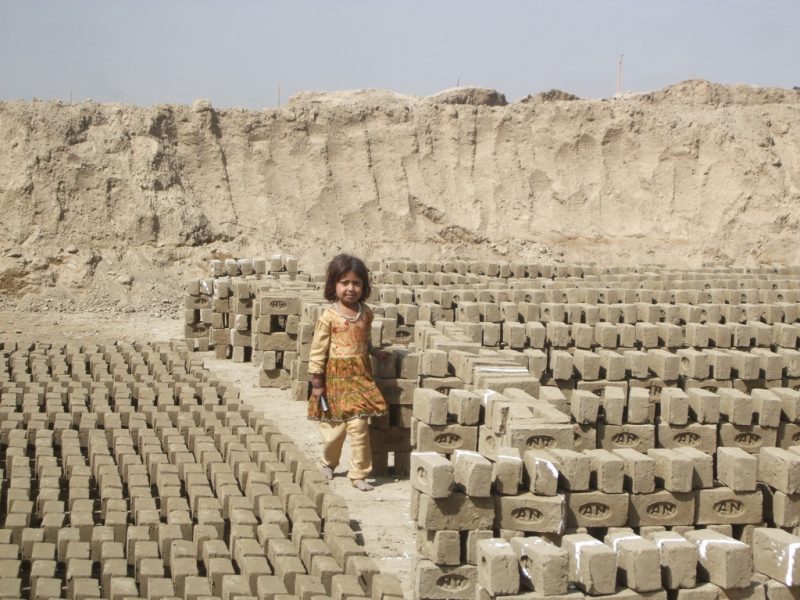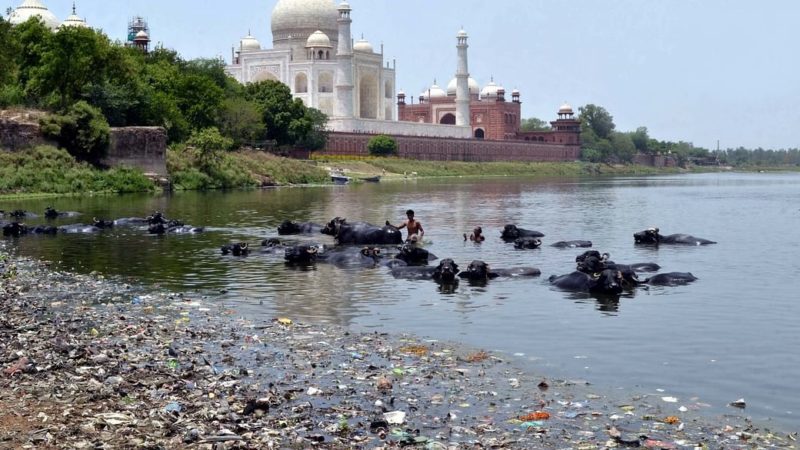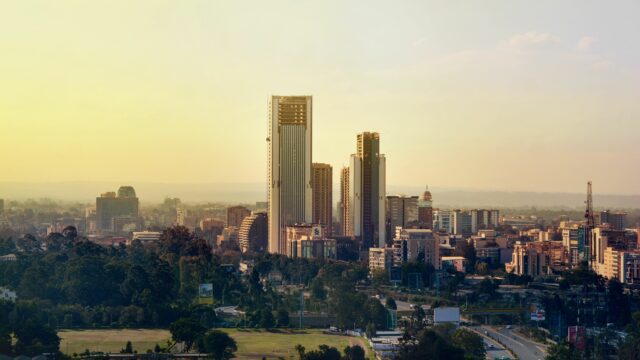India's environmental laws and COVID-19

Although the COVID-19 crisis across the globe has impacted different countries at different degrees, but the common phenomenon that came up across all countries are the exposed strengths and gaps in existing public policies and adaptive capacity. Strategies for developing better preparedness and coping actions are both significant to deal with large scale threats like COVID-19.
Development of adaptive capacities and resilience are necessary components of preparedness for an external shock. But often, while building strategies for adaptive capacities and resilience for a society and economy, environmental aspects take a backseat due to their indirect (or invisible) impacts and complex interactions with the social and economic systems. Stringent environmental regulations act as a base to formulate strategies to build resilience of the integrated socio-ecological system to absorb the external perturbations that might take place.
Recent experiences of India, which has been substantially impacted by the COVID-19 pandemic, points out to a number of concerns in that line. The current scenario of environmental regulations in India becomes vital to take into account in the present context of a overlap of external threats like climate change and health pandemic, both of which has widespread impact on the country through multiple chain effects on the ecosystem, human and social well-being and economy.

Figure 1: Environmental threats and regulations in India. Figure 1 highlights some of the prevalent natural and anthropogenic direct threats (Symes et al 2018; Roy et al, 2016; Reddy et al 2014; Shiva et al 2000; Greenstone and Hanna 2014;Misra and Pandey 2005; Sharholy et al 2008; Minhas 2020)to the ecosystem and environment in India and the existing environmental regulations in the country.2 A significant impact of these threats on the human and social well-being and economy are also evident.3
Experiences of India in context of COVID-19
In the recent past and in light of the current COVID-19 pandemic, there have been growing examples that demonstrate an ill-functioning environmental protection laws and regulations in India and the need for a paradigm shift in protecting the environment.
Some of such recent incidents in India can be highlighted, in this regard:
Among the top 20 most polluting cities in the world, 15 are in India4. Suspension of industrial activities (including the coal- based sectors), transportation and other activities during lockdown imposed due to the outbreak of COVID-19 caused rapid improvement in air and water quality across the country. Some studies have shown an association between air pollution and increased chances of death due to COVID-19.5
Water stress (in terms of water availability, access and quality) is another aspect of the bigger problem that constrains communities from maintaining basic hygiene and sanitation during outbreak of infectious diseases such as this one.6 Hence, dealing with pollution to maintain carrying capacity of the ecosystems and community health in a highly populated country with unplanned human settlements is a challenge.
Anthropogenic threats to the biodiversity and ecosystem in protected areas and biodiversity hotspots are considered to make the country more vulnerable to future pandemics. These include deforestation, poaching (Gupta et al 2007), illegal wildlife trade (Steinmetz, Srirattanaporn, Mor‐Tip & Seuaturien 2014), lack of protection of indigenous species, unlocking protected areas for mining, road construction and other developmental projects7. Protected area management principles, which are materialized through wildlife and forest protection laws,8 are considered to fall short on several aspects in India.
Some of them include lack of surveillance and standards, unsustainable tourism practices, denial of the role of indigenous communities in forest and wildlife conservation activities and withdrawal of the right of these communities to have access to forest resources, which often exacerbate human-wildlife conflicts (Tripathi 2016, Talukdar 2003, Bindra 2010).
Industrial disasters and COVID catastrophies
There are several other impacts of anthropogenic threats on environment too. During the pandemic, the country has experienced a number of industrial disasters (e.g. gas leak in polymer plant in Andhra Pradesh, boiler explosion in thermal power plant, steel factory and chemical plant in Tamil Nadu and Gujarat and fire in biodiversity rich landscape in Assam caused by natural gas extraction9) due to lack of compliance of environmental norms and poor safety standards.
These caused loss of lives, long term health impacts and detrimental impact on the environment.10 There lies the significance of stringent environmental safety standards for mining activities, infrastructure development, power projects (thermal, nuclear and hydro), real estate and other industrial projects. The country is currently going through a nationwide discontent over the dilution of environmental regulations in the recent proposed draft of the Environmental Impact Assessment (EIA) Notification 2020 of India.11 To ease the running of industrial activities the environmental regulatory regime has been consistently weakened by the government since the commencement of EIA in India.

The recent draft EIA followed that trend by removing judicial control, exempting several projects from public consultation, increasing the number of projects that would not require Environmental Impact Assessment to get clearance and post environmental clearance monitoring of project activities.12 These hints towards serious threat to the environment, long term sustainability of the economic development and human well-being.
Food security and nutritional status of a country are critical for achieving sustainable development. But forces like trade and market, loopholes in the patent regime, dominance of transnational corporations, internal production policies have exposed India to expansion of industrial or commercial farming, use of high yield and genetically modified crops and loss of genetic diversity of crops (Kothari 1999; Gonzalez 2011).
These pose a threat to the food security through higher chances of crop failure, lack of seed sovereignty, farmers’ distress (Shiva, Emani and Jafri 1999) and deplete resilience of both ecosystem and community. In that aspect, cultivation of indigenous crops with genetic diversity, sustaining ecosystem functionings and maintenance of agro-biodiversity need to be ensured to stay better prepared for situations like the current pandemic or climatic threats. Agricultural laws and regulations in the country need to be driven in that direction.
Extreme events like cyclone, flooding due to heavy rainfall etc. further adds to the vulnerability. Massive impacts occurred due to the landfall of super cyclonic storm Amphan13 on May 20, 2020 in the eastern coast and another cyclonic storm Nisarga14 on June 3, 2020 in the western coast of India during the pandemic crisis. Till July 15, 2020, approximately 45 Lakhs people (with several loss of human lives, properties and wildlife in Kaziranga Wildlife Sanctuary) were affected in the north eastern state of Assam due to flooding of Brahmaputra riverand landslides as a result of three days of heavy rainfall.15 The out-migration rates (Hajra and Ghosh 2018; Das 2016) are higher in regions with higher vulnerability to natural threats such as Sunderbans in West Bengal (prone to cyclonic storms, flooding, saline water intrusion etc), Assam (prone to flooding during monsoons), drought prone regions like Bundelkhand and several other places in India.
“ The exposure to COVID-19 crisis turns out to be an eye opener for India to rethink and redesign the national policy focus.”
After the outbreak of COVID-19 when people lost jobs and migrant labourers tried to get back to their native place, these incidents aggravated their vulnerability by severely impacting the potential livelihood opportunities and access to basic facilities. It put forwards the exigency of developing coastal and inland resilience through integrated action towards disaster proof infrastructural planning, crop planning, social security, and livelihood protection through strengthening of disaster management plan, coastal regulation zone notification and it’s implementation.
Some of the additional environmental acts in India, that have become more relevant to act on during the post-COVID condition, are those related with waste management i.e. Bio-medical waste management rules, Plastic waste management rules etc.
Is India missing an opportunity?
The exposure to COVID-19 crisis turns out to be an eye opener for India to rethink and redesign the national policy focus. While coping with the enormous impact of the pandemic on the community health, livelihoods and overall economic impact it also calls for developing policy strategies to strengthen preparedness for potential future crises. As already discussed, the crises are manifold and it includes both climate change and human induced threats.

Formulation of enabling policies and effective plan of actions needs to integrate both short and long term vision for coming up with policies for better preparedness (ex-ante) and better coping capacity (ex-post). But as per the recent experiences of the country, it fell short on both these aspects. After COVID-19 outbreak, the economic recovery package announced by the government focused primarily on short term coping mechanisms which neither had any long term vision nor any measure to make economic recovery “greener” or pro-environmental.
Apart from the inadequacy of the recovery package, in the past few months India has gone through dilution of the EIA, the dangers of emissions, pollution, industrial accidents, forest and biodiversity loss due to poaching and “developmental” activities and in all these climate disasters loom large as exemplified in the cyclonic storms, flooding, locust attacks and so on. Here, we are confronted with a fundamental question- is India letting go of an opportunity to rebuild the economy to make it more resilient? The need to focus on environmental factors has become more evident. As a basis for that, putting necessary environmental laws and regulations in place and effective implementation is the need of the hour to make the national policy strategy to follow a “green” and sustainable path.
- Dr. Satabdi Datta, Manager (Policy and Planning), Development Alternatives1
References:
Bindra, P. S. (2010). Report on impact of tourism on tigers and other wildlife in Corbett Tiger Reserve. Ministry of Tourism, Government of India.
Das, D. (2016). Changing climate and its impacts on Assam, Northeast India. Bandung, 2(1), 1-13.
Gonzalez, C. G. (2011). Climate change, food security, and agrobiodiversity: Toward a just, resilient, and sustainable food system. Fordham Environmental Law Review, 493-522.
Greenstone, M., & Hanna, R. (2014). Environmental regulations, air and water pollution, and infant mortality in India. American Economic Review, 104(10), 3038-72.
Gupta, B. K., Singh, R., Satyanarayam, K., &Seshamani, G. (2007). Trade in bears and their parts in India: threats to conservation of bears. In Proceedings of the fourth International Symposium on the trade in bear parts (pp. 50-60).
Hajra, R., & Ghosh, T. (2018). Agricultural productivity, household poverty and migration in the Indian Sundarban Delta. Elem SciAnth, 6(1).
Kothari, A. (1999). Agro-biodiversity: The future of India's agriculture. Article for MCAER.
Minhas, S. (2020). Could India be the origin of next COVID-19 like epidemic?. Science of The Total Environment, 138918.
Misra, V., & Pandey, S. D. (2005). Hazardous waste, impact on health and environment for development of better waste management strategies in future in India. Environment international, 31(3), 417-431.
Reddy, C. S., Khuroo, A. A., Krishna, P. H., Saranya, K. R. L., Jha, C. S., &Dadhwal, V. K. (2014). Threat evaluation for biodiversity conservation of forest ecosystems using geospatial techniques: a case study of Odisha, India. Ecological Engineering, 69, 287-303.
Roy, J., Datta, S., Kapuria, P., Guha, I., Banerji, R., Rao, S., et al. (2016). Coastal Ecosystem and Changing Economic Activities and Vulnerabilities along Chinese and South Asian Coasts. APN Science Bulletin (6), 21- 26.
Shiva, V., Emani, A., &Jafri, A. H. (1999). Globalisation and threat to seed security: case of transgenic cotton trials in India. Economic and Political Weekly, 601-613.
Shiva, V., Jafri, A. H., Emani, A., &Pande, M. (2000). Seeds of suicide: the ecological and human costs of globalisation of agriculture. Seeds of suicide: the ecological and human costs of globalisation of agriculture.
Sharholy, M., Ahmad, K., Mahmood, G., & Trivedi, R. C. (2008). Municipal solid waste management in Indian cities–A review. Waste management, 28(2), 459-467.
Steinmetz, R., Srirattanaporn, S., Mor‐Tip, J., & Seuaturien, N. (2014). Can community outreach alleviate poaching pressure and recover wildlife in South‐East Asian protected areas?. Journal of Applied Ecology, 51(6), 1469-1478.
Symes, W. S., Edwards, D. P., Miettinen, J., Rheindt, F. E., & Carrasco, L. R. (2018). Combined impacts of deforestation and wildlife trade on tropical biodiversity are severely underestimated. Nature communications, 9(1), 1-9.
Talukdar, B. K. (2003). Importance of anti-poaching measures towards successful conservation and protection of rhinos and elephants, north-eastern India. IUCN, 59.
Tripathi, P. (2016). Tribes and forest: a critical appraisal of the tribal forest right in India. Res J SocSciManag, 6(06), 8.
Footnotes
The author acknowledges with thanks inputs received from Ms. Zeenat Niazi (Vice President, Development Alternatives Group, New Delhi, India).
https://www.downtoearth.org.in/blog/pollution/lessons-from-covid-19-on-reducing-india-s-environmental-pollution-70891
https://www.bbc.com/future/article/20200427-how-air-pollution-exacerbates-covid-19
https://www.timesnownews.com/india/article/india-s-safety-crisis-industrial-accidents-during-covid-19-kill-at-least/617921
https://www.thebetterindia.com/231602/draft-eia-comments-impact-environment-impact-assessment-norms-explained-ministry-deadline-india-nor41/


